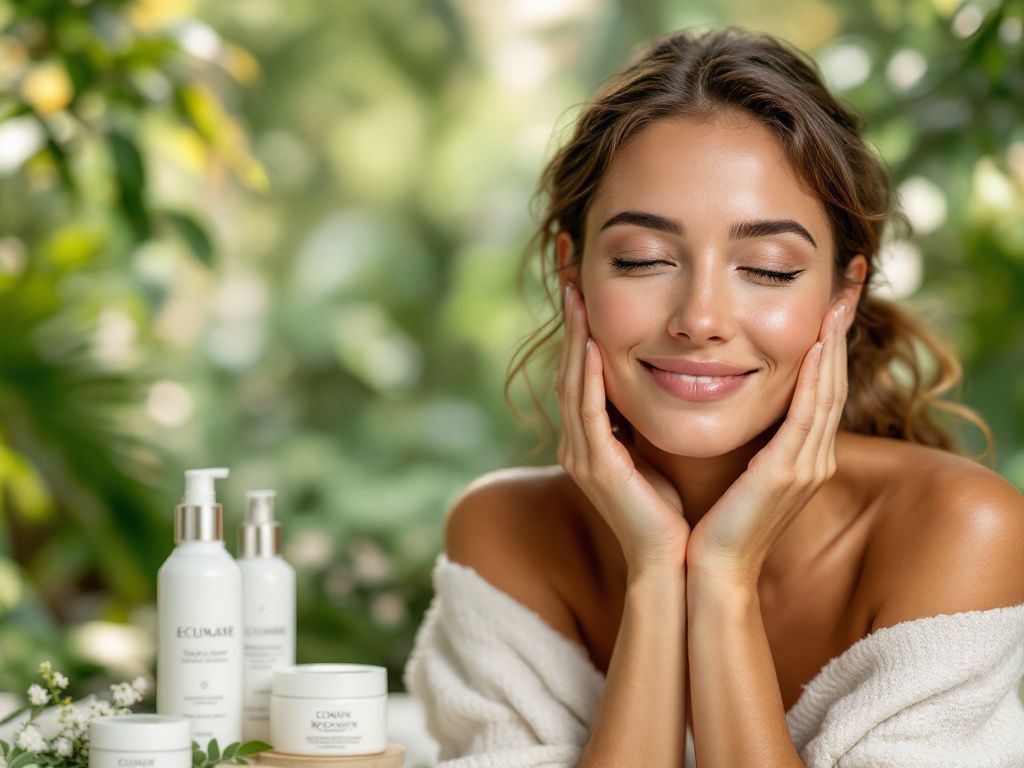Ever found yourself peering in the mirror, dazed at the persistence of post-acne marks and just yearning for a smooth canvas again? You’re not alone. Navigating the aftermath is as crucial as the treatment, focusing on what dermatologists lovingly call *post-acne recovery care*. Let’s have a chat about how you can guide your skin through this healing journey, balancing efficacy with a touch of grace.
Table of Contents
ToggleUnderstanding Post-Inflammatory Realities
When we finally assume victory over active acne, we’re often left with the formidable aftermath—post-inflammatory hyperpigmentation and scarring. It feels like a relentless cycle, doesn’t it? The key here is not just addressing these lingering reminders but understanding the deeper skin dance taking place. Our skin is basically trying to repair itself, a vibrant tapestry of processes that need just the right encouragement to perform at its best.
The Four R’s of Recovery Focus
In the quest for optimal post-acne treatment, think of these as your guiding pillars: Renew, Repair, Recalibrate, and Rehydrate.
Renew
Kick-off by nurturing your skin’s natural turnover. Dead skin cells can linger, dulling skin and clogging pores, which sounds like calling acne right back. Gentle exfoliation, either through chemical exfoliants like AHAs or enzymes, helps pave the way to fresh, vibrant skin over time. Be gentle though; it’s a marathon, not a sprint.
- What to Use: Alpha-hydroxy acids (AHAs) like glycolic or lactic acid work wonders over time, softly lifting off the dead cells.
- How Often: Depending on your skin’s sensitivity, aim for 2-3 times a week. Trust me, consistency trumps intensity.
Repair

Next, let’s talk about nurturing what your skin naturally wants to do—heal! We’re boosting skin regeneration and calming inflammation, essentially cheering on your biology. Think ingredients like niacinamide and peptides.
- Pros Choices: Look for serums and moisturizers rich in niacinamide, known not just to reduce inflammation but to reinforce the skin barrier. Peptides, those tiny protein fragments, shore up the skin’s foundation, promoting production of collagen and elastin. Can’t go wrong here.
- Routine Slot: Typically, these ingredients slot right into the serum stage of your skincare routine—after cleansing and before moisturizing.
Recalibrate
Our favorite—finding balance. This is all about restoring the skin’s pH levels and keeping sebum production in check. Remember, the aftermath of acne isn’t just what’s visible—it’s sometimes how your skin feels; it can vacillate from oily to parched and back, and recalibrating this is essential.
- Balancing Act: Products with witch hazel or light, non-comedogenic oils might help here but use cautiously, making sure you don’t inadvertently dry out your skin.
- In Action: Consider incorporating such actives into your toner or minor topical treatments that target oil regulation.
Rehydrate
Everyone knows this one, yet it bears repetition for its understated magnificence. A hydrated skin surface aids in faster healing and staves off additional irritation. Isn’t it neat how solving one issue tackles potential new ones too?
- Hero Products: Hyaluronic acid is your hydration sage, drawing moisture like a magnet but always remember to seal it in with a moisturizer to prevent moisture loss.
- Double-ice layer: Post-serum and pre-sunscreen is its prime-time seating. Though if cold weather jabs, don’t shy from mid-day mist with thermal water spritzes for pick-me-ups.
Your Post-Inflammatory Game Changer Steps
So with the understanding bit under our belts, let’s turn our attention to some practicalities. Whether you’re a skincare novice or veteran, crafting a straightforward, all-encompassing regimen is pivotal.
Step 1: Gentle Beginning with Cleanse
Basics first. Use a sulfate-free cleanser that’s effective but without stripping everything away, leaving your skin resilient for what’s next—like a superhero readying for action.

Step 2: Healing Boost with Exfoliation
Remember this is occasional, not every day. You want to incite skin turnover without triggering a revolt! Combo AHAs are generally well-tolerated and simple to incorporate.
Step 3: Television-Worthy Serums
This is where you’ll play skincare scientists. Select your serum—whether niacinamide, peptides, or prebiotic blends—and let them serum-inally repair and protect.
Step 4: Plush Hydration
Hyalauronic acid, possibly paired with glycerin or other hydrating agents, cements that sinking feeling of wellness. Follow swiftly with your touchscreen moisturizer of choice to cap it off.
Step 5: SPF As Your Armor
If there’s one proverbial hill on which skin health rests, it’s sun protection. Those post-inflammatory marks are more sensitive than they look, potentially deciding to darken further with unprotected sun exposure.
Remember, relax and enjoy the process of discovering what tickles your skin’s fancy as much as possible. Results weave with time, patience, and care.
Navigating Common Recovery Solutions & Mistakes
As with any enlightened journey, there are typical hurdles you might find yourself overstepping. Let’s save you a few face-palms:

Quick-Fix Temptations
That viral overnight quick-cure, claims of miraculous ingredient X, or drastic DIYs … steer cautiously. Hyper-exfoliating or experimenting without guidance could hop you back into the dreaded breakout cycle.
Ignored Consistency
It’s not how potent the formula says it is; it’s how religiously integrated into your routine. Make yourself “self-care biscuits” of effort—intentional, even if small regularity, always compounds to results.
One-Size-Fits-All Products
Know your skin. A friend’s forehead miracle may cause your cheek chaos. Personalization is more influential than you think when calibrating skincare essentials.
Let’s Talk Lifestyle
Skincare is crucial, yes, but don’t discount the hardware—the body and its processes need nurturing too. Nutrition, stress management, and sleep work in silent, profound ambition to keep skin attuned.
- Dietary Inclusions: Foods rich in vitamins C, E, and antioxidants support cellular regeneration. Hydrate from the inside out with plenty of water (warm or cold, with a hint of lemon—trust me on this one).
- Rest: Effective downtime prescribes both restfulness barriers against stress and builds adequate barrier function—the nighttime detox we often undervalue.
Conclusion
In this winding recovery path, it’s the cumulative, rounded approach—embracing the process—that etches out success. Be forgiving to rebels (occasional unwelcome flare-ups) and acknowledge minor victories. After all, post-inflammation care is not a rigid script; it’s a harmony between listening to your skin and pampering its unique needs. In this journey, you’re your skin’s own whisperer. Happy healing!
Frequently Asked Questions
What are the common types of post-acne marks and scars?
Post-acne marks and scars can be categorized into several types, including dark spots (post-inflammatory hyperpigmentation), raised keloids, and atrophic scars (such as icepick or boxcar scars). Each type requires different care and treatment approaches[5][3][1].
How can I treat post-acne marks and scars at home?
At home, you can use skincare products such as gentle cleansers, brightening facial serums, and retinol serums to help reduce the appearance of post-acne marks. Consistency in your skincare routine, hydration, and moisturizing are also crucial. Additionally, using over-the-counter scar treatments, skin creams with ingredients like azelaic acid, and sunscreen can help[3][5][1].
What are some professional treatments available for post-acne scars?
Professional treatments include laser resurfacing, dermabrasion, chemical peels, microneedling, skin tightening with radiofrequency, fillers, injections (such as Botox or corticosteroids), electrodesiccation, and surgery. These treatments aim to remove damaged skin layers, stimulate collagen production, or fill in depressed scars[1].
Why is it important to control active acne before treating post-acne scars?
Controlling active acne is essential because many treatments for acne scars can interfere with acne medications and procedures. Treating active acne first helps prevent further scarring and ensures that scar treatments are more effective[1][3].
References







